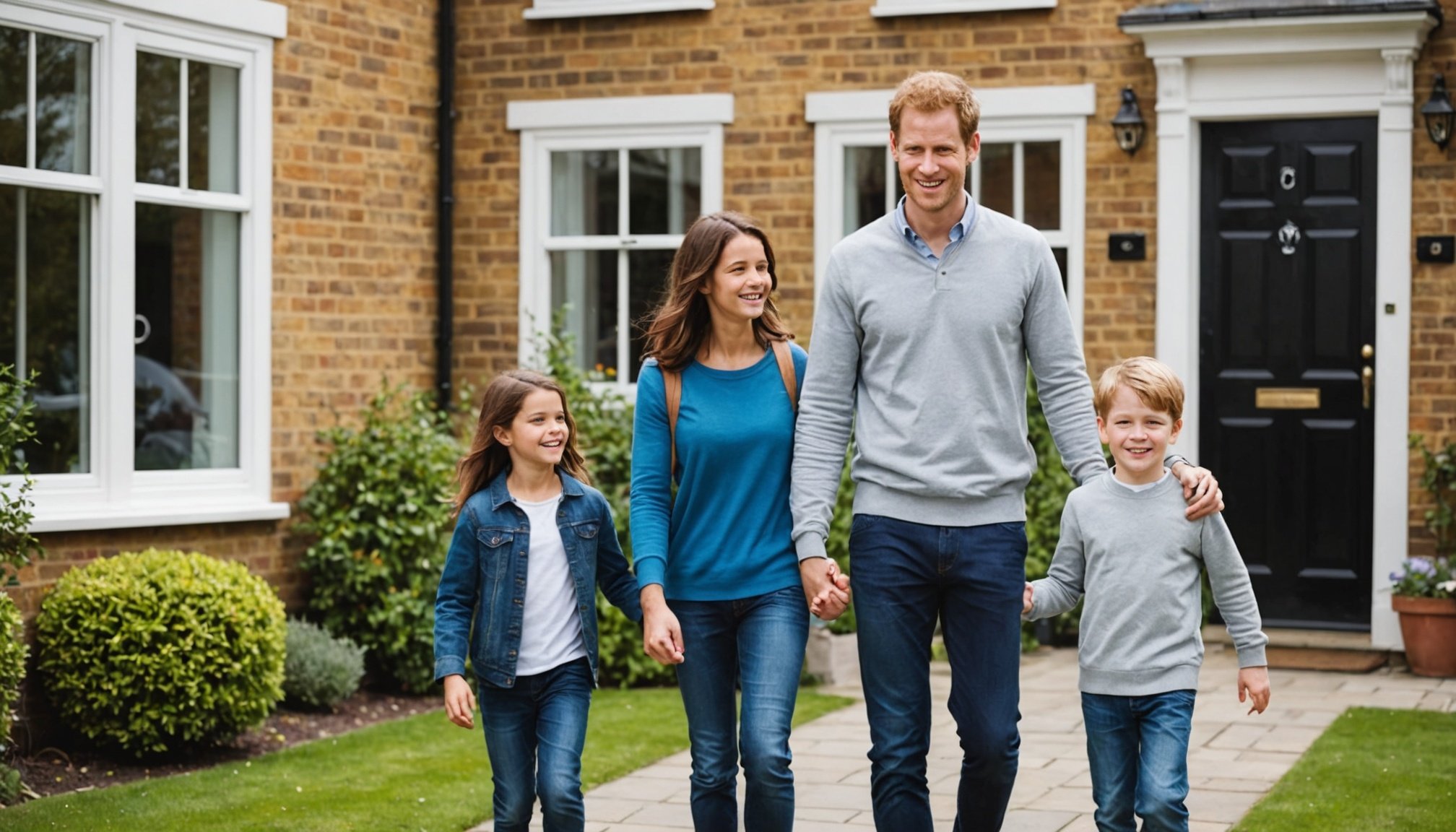Understanding Family Needs in Suburban London
When considering family housing requirements in suburban London, the importance of adequate space and intelligent layout cannot be overstated. Families tend to prioritise homes that offer a balance between open areas conducive to interaction and private spaces essential for personal time. It is crucial that the layout supports family dynamics, such as dining areas that also serve as homework stations and living rooms that accommodate both relaxation and play.
Safety and accessibility in apartment design are key family-friendly criteria. Features like wide doorways for prams, safety locks on windows, and stair-free entrances are not only conveniences but essential aspects that promote child safety and ease of movement for all family members. Ensuring that safety measures are integrated into the living environment can significantly enhance everyday life for families.
Topic to read : Essential Elements for Thriving Property Development in the UK”s Expanding Growth Corridors
Community aspects play a pivotal role in family living choices. The presence of parks, playgrounds, and recreational facilities nearby can drastically elevate a neighbourhood’s appeal. Parents often seek out areas with strong community ties, evidenced by events such as local markets and communal activities that foster connection. Choosing a residential area where community engagement is prioritised can contribute positively to the family experience, promoting a sense of belonging and support.
Optimal Layouts for Family-Friendly Apartments
Creating family-friendly apartment layouts requires careful consideration of design principles that promote both interaction and privacy. One crucial feature is the implementation of open spaces that facilitate daily family activities such as dining and playing. Additionally, clever design solutions like multi-functional furniture can adapt rooms to suit evolving family necessities, offering flexibility and convenience.
Also to read : Essential Factors to Weigh When Investing in UK Retail Real Estate After the Pandemic
Privacy remains paramount for harmonious family living. Effective apartment layouts ensure that parents and children alike have secluded areas for rest and relaxation. Thoughtful room placements allow for sound barriers between living and sleeping quarters, granting each family member a personal retreat amidst the busy household environment.
Multi-purpose spaces are invaluable to cater to the dynamic needs of families in suburban London. These areas might incorporate study nooks within living spaces, transforming a single room into a hub for work, leisure, and learning. Such functional design not only maximizes utility but also fosters a supportive family atmosphere.
Ultimately, the best apartment designs blend functionality with aesthetics, acknowledging the everyday flow of family life while maintaining essential private moments. Through understanding these core aspects, families can better assess and customise their living spaces to fit their unique circumstances and aspirations.
Safety and Security Features
Ensuring apartment safety is essential for family peace of mind. Secure entrances are a primary concern, deterring unauthorised access and safeguarding residents. Incorporating reliable security measures is crucial; these might include gated entrances, electronic access systems, and 24/7 surveillance systems, offering families added assurance.
Child safety in apartments demands special consideration. Implementing features such as childproof locks on windows and doors, non-slip flooring, and protected electrical outlets helps mitigate common household hazards. Additionally, secure balcony railings can prevent accidents, allowing children to explore their environment safely.
Emergency planning within family apartments is a vital aspect often overlooked. Families must familiarise themselves with fire escape routes, evacuation plans, and the location of safety equipment such as fire extinguishers and first-aid kits. Regular drills can reinforce these plans, ensuring all family members respond effectively during emergencies.
Some key features enhancing apartment safety include:
- Childproof window and door locks
- Reliable electronic access systems
- Secure balcony railings
- Non-slip flooring in common areas
These considerations highlight the necessity of a holistic approach to apartment safety, encompassing both preventative and responsive measures. They exemplify how thoughtful design and preparation can significantly enhance the living experience, providing a safe haven where families can thrive.
Community Amenities and Their Impact
In suburban London, the presence of community amenities greatly influences familial living decisions. Families often seek out neighbourhoods with easy access to parks, recreational areas, and playgrounds, which provide safe spaces for children to play and for family outings. The proximity to such amenities fosters an active lifestyle and strengthens neighborhood bonds.
Additionally, the availability of community centers and family programs can further enhance the living experience by offering activities that engage children and adults alike. These centers often host events and workshops, creating opportunities for learning and socialising, which are critical aspects of a thriving community.
Families also value family-friendly local businesses and services. Grocery stores, cafes, and medical facilities that cater to family needs contribute significantly to the convenience and quality of daily life. A neighbourhood that offers accessible services builds community trust and supports family well-being.
Moreover, the presence of an engaged local community that organises family-oriented events such as fairs and markets enriches the social fabric. Such activities not only entertain but also create lasting memories, fostering a sense of belonging. In essence, well-rounded community amenities shape ideal environments where families can flourish, offering convenience, engagement, and support.
Accessibility to Transportation and Schools
In suburban London, the convenience of public transportation is indispensable for families. With buses and trains offering regular services, families can efficiently commute to work, school, or leisure activities without the hassle of extensive travel times. The availability of multiple transportation options allows flexibility and aids in managing busy schedules, making suburbs a more attractive choice for family living.
The proximity of local schools is a major consideration for families when choosing an apartment. Access to reputable schools ensures quality education, essential for children’s future prospects. Schools in close vicinity reduce commute times, which not only increases convenience but also enhances children’s safety. It allows more time for after-school activities, enriching a child’s development.
Safe walking routes to both schools and transport links are critical. Ensuring paths are well-lit and equipped with clear pedestrian crossings improves safety and encourages healthy, active lifestyles. Families appreciate the peace of mind knowing their children can travel safely to and from school or the bus stop.
Ultimately, a mix of reliable transportation, esteemed schools, and secure routes greatly influences a family’s decision on where to reside. Such infrastructure simplifies daily logistics, contributes to community well-being, and supports family routines, enabling a balanced and fulfilling suburban life.
Case Studies of Successful Family-Friendly Developments
Exploring family housing case studies reveals invaluable insights into the components that make suburban developments thrive. Notable projects demonstrate innovative solutions that cater to various family dynamics, highlighting the effectiveness of thoughtful design and community integration.
Highlighting Notable Developments
Several successful developments have set benchmarks for family living environments. These developments feature designs centred around spacious layouts, integrated green spaces, and safe community areas, enhancing overall livability for families. For instance, some projects have implemented shared gardens and play areas within apartment complexes, promoting both safety and social interaction among residents.
Lessons Learned from Case Studies
Key lessons from these studies indicate the importance of combining functionality with community-centric amenities. Successful family-oriented projects often emphasize flexible living spaces that can adapt to changing needs and focus on creating a welcoming neighbourhood atmosphere. These projects also underline the necessity of engaging local communities in the planning phase to ensure the design aligns with resident needs.
Recommendations Based on Evidence
Based on the evidence from these examples, expert insights recommend prioritising accessibility, safety, and sustainability in the design of family apartments. Common traits in these developments include robust safety protocols, easy access to essential services, and an emphasis on fostering community ties, establishing a template for future family-friendly housing solutions.
Expert Insights and Practical Tips
Considering the intricacies of family living spaces, architects and urban planners highlight the importance of adaptable designs. Integrating flexible layouts enables families to reconfigure spaces, accommodating evolving needs as children grow or family dynamics shift.
When selecting or designing a family apartment, several practical tips can enhance living conditions. For instance, prioritising homes with ample storage solutions helps manage clutter and maintain a tidy environment. Opt for units featuring effective soundproofing to ensure peace and privacy—a crucial element in reducing household stress. The inclusion of energy-efficient fixtures not only lowers utility costs but also promotes a sustainable lifestyle, benefiting the broader community.
The role of community feedback in shaping design choices cannot be overstated. Engaging with local residents during the planning phase ensures living spaces reflect the needs and preferences of those who inhabit them. Such input often guides the implementation of family-friendly amenities and sustainable practices, creating environments that support holistic living experiences.
In summary, expert advice underscores the need for well-thought layouts and community-centric approaches. By focusing on these aspects, families can create homes that not only fulfil their immediate requirements but also adapt seamlessly over time, fostering enriched communal interactions and personal growth.











